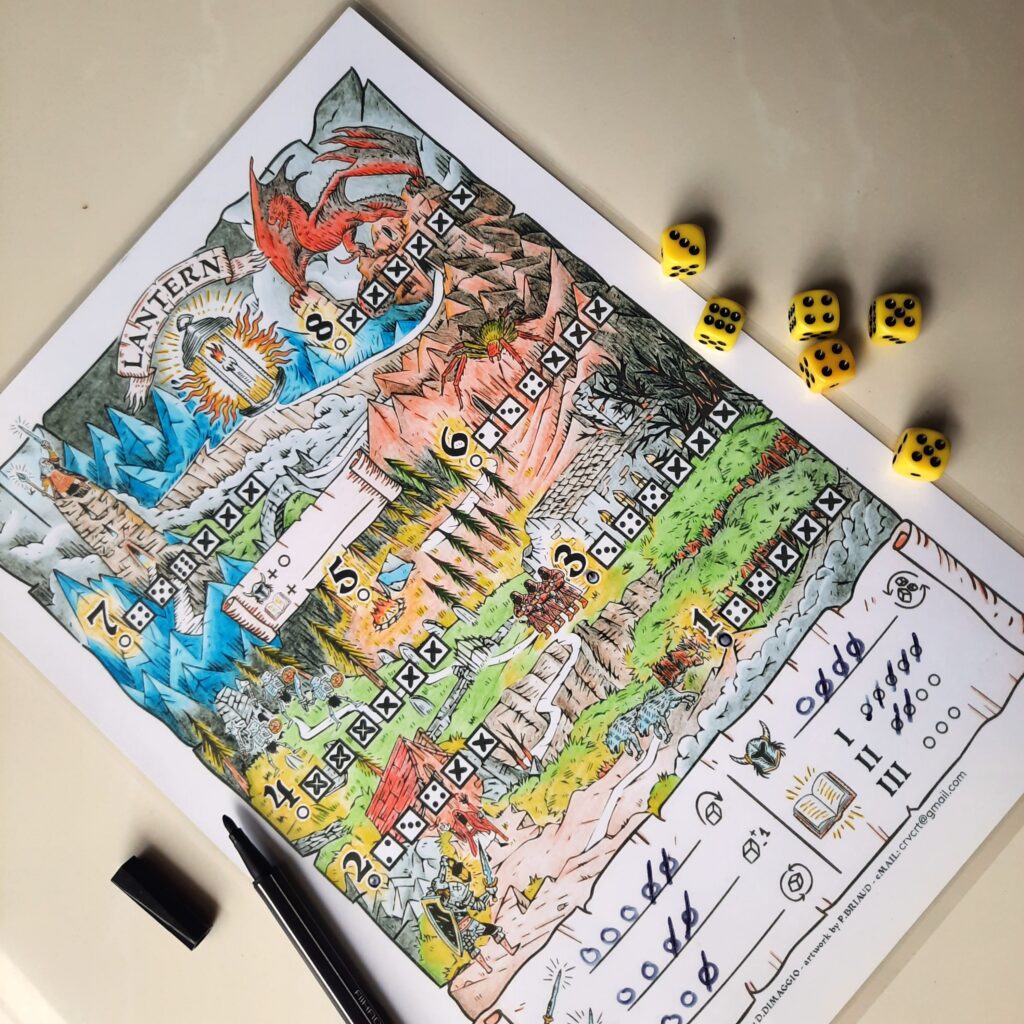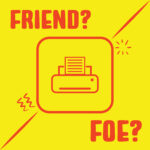From Paper to Perfection | Customizing a PnP Game

How far are you willing to go for a game that you love?
While admitting that the line sounds cheesy, a game can grow in you to the point you start tweaking it to your taste. Being a fan of customization, our little team always experiments with any print-and-play games that we come across; by introducing new game mechanisms, or enhancing the ones that exist. Not all experimentations yield success, but those that do are worth shelving for a lifetime. So let’s dive right into a recent experience we had with a print-and-play game that went just right!
Whenever we are in the process of learning a new PnP game, a few common queries are always on the list, like:
– How many pages do I need to print?
– What are the components that I need?
– Is lamination needed?
– Will the game take too much space?
– Is it travel friendly?
To add to that, we have our questions for experimentation:
– What components can I add or swap to enhance the game experience?
– Can I alter some game mechanisms to make the game more interesting?
And, the final query:
Is the game worthy enough for me to build it into a board game?
Very few games get ‘Yes’ on the final query, but one of the games that recently got into this elite list of ours is Lantern. Why did we choose to customize Lantern into a board game? Because our team clicked with the game in no time!

From the start
For those who are new to Lantern, it is an award-winning roll-and-write game that has only one page of print, and six dice to immerse in a world of fantasy. The rules are very simple with unique dice mechanisms, with the goal of defeating 7 enemies (including a kickass Dragon) to emerge victorious in a lost land. The information we got from Board Game Geek and a hilarious-yet-insightful playthrough video of Martin Gonzalvez, compelled us to try it out.
Upon knowing how the game is played, we instantly opted for laminating the game to make it more durable for multiple rounds of play. Our team also sensed the game to be catchy, so laminating the game made more sense than having to print the one page over and over again.
And we sensed it right! In no time, the game easily made its way to our go-to PnP games. We smelled the scope of customization all over it! After getting a positive response from all our team members about the final query, we started making a list of what can be customized in this game. And we came up with this:
1. Having six dice in the game, Lantern definitely needs a tray. Either go for a separate dice tray, or build a board for the game with an indentation on it to hold the dice.
2.Lantern is originally available in black-and-white format. So you can print it out, color it by yourself, and laminate it to make it feel more personalized. The credit for the stunning colored version featured in this article goes to Chris de Villiers!
3. The seven enemies that are on the printout need to stand out in the game. We can have them through gaming pieces like pawns, or 3D prints. There can be indentations similar to the one for dice, to hold the enemies once they are defeated.

The Gaming Board
So we sat together to sketch out what Lantern might look like in the shape of a board game.
We decided to have two indentations on the base of the game, one for the six dice while the other for the 7 enemies. Transcending from a paper print to a board game meant Lantern would end up taking more space for shelving than usual, so we chose to opt out any additional elements from the game, like a separate dice tray. As for the gaming pieces for the 7 enemies, we found them at a great deal from Amazon, while we already had D6 dice in hand. We chose to print and laminate the colored version of the game, as we focused mainly on building the gaming board of Lantern instead of coloring the print.
Let the crafting begin!
We used PVC (5mm) to build the gaming board for the game to make it sturdy, and used a strong superglue to assemble the pieces together. The gaming board took less than an hour to assemble, and we decided to personalize it by drawing on the blank spaces. And then came the ultimate moment- to play the game in the new setup. Did the gaming board enhance the experience of playing Lantern?

100/100!
The experience undoubtedly got enhanced. With a gaming board in place, we no longer needed a very flat surface to play the game, nor did we need any additional components. The gaming board turned out to be much more sleek and compact in size than our initial sketch, making it easier to shelve. If you have a knack for crafting, and really enjoy playing Lantern, we highly recommend you to try to build a gaming board for it. The game, with its amazing mechanisms, felt more complete in this format.
Customization is a continuous process, so we are already thinking how to elevate Lantern to yet another level. One of the ideas is to utilize our super-handy mini 3D printer to make miniatures of the 7 enemies, and for the hero. It allows you to visualize the seven epic battles the player experiences while playing Lantern.
So, is customization your cup of tea? Do you feel the itch to tweak games? Then grab your favorite PnP game, for its time to elevate it- from paper to perfection!
If you are interested in customizing Lantern, here are some handy links:
– Link to detailed game review of Lantern
– D6 Dice guaranteed to enhance your game experience
– Gaming pieces at a great deal
– A handy 3D mini printer
– A printer we love to use for PnP games
– A kickass Laminator


Tasliman is a board game developer based in Bangladesh, with the dream of exploring the world of games and introducing it to anyone new to it. He is the founder of Kraftz, a brand that develops board games commercially, as well as with reputed entities like BRAC and The Gates Foundation.




